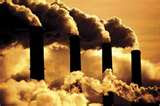 |
| source: barrierreef.org |
The Great Barrier Reef Foundation recently commissioned a study assessing the reef's economic, social and natural value. The findings showed that the reef is worth $56 billion to Australia. According to the report, there could be vast economic consequences if there is no additional effort to protect the reef as an ecosystem, as an economic driver, and as a global treasure.
Here's the complete report from http://www.news.com.au/technology/environment/natural-wonders/great-barrier-reef-is-worth-56-billion-to-australia-and-is-too-big-to-fail/news-story/e6b47dbb42103ae37e5b08fba684f15d
Great Barrier Reef is worth $56 billion to Australia and is ‘too big to fail’
THE Great Barrier Reef is worth $56 billion to Australia’s economy and is “too big to fail”, according to a new report. Deloitte Access Economics found the reef contributed $6.4 billion to the Australian economy in 2015-16 and the World Heritage listed area supported 64,000 full time jobs.
The report commissioned by the Great Barrier Reef Foundation, with support from the National Bank and the Great Barrier Reef Marine Park Authority, assessed the reef’s economic, social and iconic value.
“At $56 billion, the Reef is valued at more than 12 Sydney Opera Houses,” Great Barrier Reef Foundation director Steve Sargent said.
“This report sends a clear message that the Great Barrier Reef – as an ecosystem, as an economic driver, as a global treasure – is too big to fail.”
While the 64,000 jobs it supports is not as many as the 230,000 jobs mining creates in Australia, this still makes it a bigger “employer” than companies like National Australia Bank, Qantas and Telstra.
The reef’s value as a tourist attraction was the biggest contributor to the reef’s $56 billion value, followed by $23.8 billion from indirect or non-use value (those who haven’t yet visited the reef but value knowing it exists) and $3.2 billion for its value to recreational users.
The report warns of vast economic consequences unless more is done to protect the reef.
It follows back-to-back mass coral bleaching events and ongoing threats posed by climate change and poor water quality.
The report, to be officially launched on Hamilton Island on Monday, comes amid a sustained campaign by environmental groups against Adani’s new mega coal mine in Queensland which they say will contribute to climate change, which is the biggest threat to the reef.
 |
| source: barrierreef.org |
But Greenpeace Climate and Energy campaigns director Nikola Casule said the report misses the point.
“You can’t put a dollar figure on the Reef. It is an irreplaceable global wonder that has captivated the imagination of billions,” she said.
“We have an inescapable moral responsibility to save it for us, and for future generations - regardless of its economic value.”
Ms Casule said the only thing that will save the reef was strong action on climate change.
“This means ending fossil fuel subsidies - like the proposed $1 billion of public money for the Carmichael coal mine,” she said.
“Australia should be a champion for the wonder that is the reef, not its executioner.”
The Deloitte analysis included a survey of 1500 Australian and international respondents from 10 countries.
It found people valued the reef for a range of reasons – some more concrete, such as its importance for tourism, and some more abstract, such as beliefs that Australia would just not be the same without it.
Two-thirds of the survey respondents were prepared to pay to protect the Reef, based on its importance to the planet, a belief that future generations should be able to visit it, its importance to biodiversity, and feelings that it is morally and ethically right to pay for its protection.
It is the first time that a natural asset’s brand value has been assessed on its total economic, social and icon value.
“The reef is critical to supporting economic activity and jobs in Australia,” the report said.
“The livelihoods and businesses it supports cross Australia far exceeds the numbers supported by many industries we would consider too big to fail.”
“As the largest living structure on Earth and one of the world’s most complex and diverse natural ecosystems, the Great Barrier Reef is justifiably considered priceless and irreplaceable,” Mr Sargent said.
WHAT THE REEF IS WORTH
• $56 billion value as an economic, social, and iconic natural asset;
• $6.4 billion economic value added to the Australian economy in 2015-16;
• $3.9 billion in economic value added to Queensland’s economy in 2015-16;
• $2.9 billion economic value added to the Great Barrier Reef Marine Park (GBRMP) region in 2015-16; and
• 64,000 jobs nationally linked to the Reef, including 33,000 in Queensland.”
charis.chang@news.com.au






